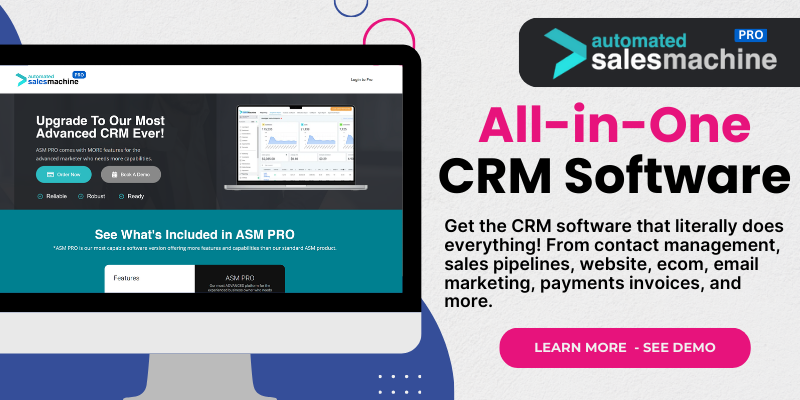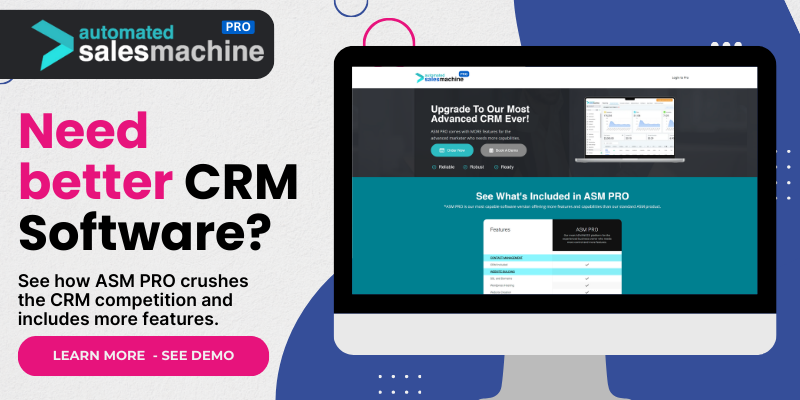Salesforce Wealth Management
Comprehensive Features
Salesforce is a heavyweight in the CRM game, and for good reason. Its wealth management solutions come packed with features that cover everything from client management to compliance tracking. I’ve found that the ability to customize the platform to fit a firm’s unique needs is a major perk. It’s not just about CRM; it’s a whole business management ecosystem.
One thing I really appreciate is how Salesforce integrates seamlessly with other business applications. If you’ve got tools for email marketing or financial management, Salesforce can tie it all together, providing a holistic view of client interactions. The analytics tools also give insight into what’s working and what’s not, helping to direct future business strategy.
When I had to choose a CRM for my wealth management firm, the comprehensive nature of Salesforce stood out. Yes, it can be a bit of a learning curve at the beginning, but once you get the hang of things, the payoff is tremendous.
Client Segmentation
Client segmentation is key in wealth management, and Salesforce excels here. It allows you to categorize clients based on various parameters like investment preferences and demographic data. In my experience, this has been crucial to tailoring communication and enhancing client relationships.
Take it from me; grouping clients allows for more relevant and personalized outreach. When you know what kind of investments your clients are interested in, you can send them tailored content that speaks directly to their needs. This leads to a more engaged client base.
Implementation of client segments can be done simply within Salesforce. Once clients are grouped, you can set up automated communications, which saves a ton of time and ensures no one feels left out in the cold.
Scalability
Scalability is another area where Salesforce shines. Whether you’re a small firm just starting out or a large firm with thousands of clients, Salesforce grows with you. I’ve personally seen firms expand tremendously without needing to switch CRMs, thanks to Salesforce’s flexibility.
This is especially significant for firms anticipating rapid growth. A system that can support additional users and increased data volume without a hitch offers real peace of mind. You also don’t want to outgrow your tools, especially when those tools are meant to help you thrive.
Assessing your potential growth early on can set the stage for a smoother transition down the line, and Salesforce simply provides options that allow for a seamless scaling process.
Wealthbox CRM
User-Friendly Interface
If you’re looking for something that’s easy to navigate, Wealthbox is your go-to. In my journey, I’ve found that some CRMs can be super intimidating, but Wealthbox manages to be both functional and friendly. You don’t have to be a tech wizard to get this up and running.
The drag-and-drop functionality really makes managing client information feel easy and intuitive. It’s laid out in a way that makes sense, and I can’t tell you how much time I’ve saved by not having to dig around for info.
With minimal training required, it’s been a hit with my team. Everyone is quickly able to jump on board, which promotes broad team engagement in managing client relationships.
Task Management Features
Wealthbox also shines in task management. Staying on top of client tasks and follow-ups can be a headache, but Wealthbox makes it more manageable. Each client has their own task list, which can be a lifesaver in ensuring no one gets overlooked.
I love how it allows me to assign tasks to team members and monitor progress in real-time. This has really bolstered our team’s efficiency and accountability. You can even integrate email threads directly into the client profile, which keeps everything right where you need it.
In the hectic world of wealth management, having a reliable way to manage tasks can keep everyone in sync and reduce the risk of oversight. It’s all about being organized and proactive!
Collaboration Tools
A standout feature in Wealthbox is its collaboration tools. It allows for easy sharing of client notes and updates among team members, which is particularly critical when everyone is juggling multiple clients. If I had a dollar for every time a team member needed a quick update, I’d be living large!
The shared team inbox is a particularly handy feature. Rather than digging through a mountain of emails, we can track correspondence as a group. This openness fosters a sense of teamwork that boosts our overall productivity.
Plus, the ability to comment on client profiles ensures that everyone has the contextual background they need for informed discussions. It’s definitely improved communication, and in wealth management, you truly can’t put a price on effective teamwork.
Redtail CRM
Cost-Effective Solution
Now, let’s talk about Redtail, which has earned its reputation as a cost-effective solution for wealth management firms. In a world where budgets can be tight, finding a CRM that doesn’t break the bank is a real win. I was initially drawn to their pricing model, which offers a flat fee per user.
What’s fantastic is that you get features like reporting and compliance right out of the box. This means that even if you’re operating on a shoestring budget, you’re not sacrificing on functionality. CDifferent pricing tiers make it accessible for firms at various stages of growth.
Many firms I’ve talked to appreciate this affordability, which allows for future investments in other areas of the business while still maintaining a top-tier CRM.
Client-Tailored Communication
Redtail understands the importance of client communication, offering various ways to tailor your messaging. You can set up targeted campaigns based on client behavior, ensuring that the content resonates with their interests. I’ve seen firsthand how personalized outreach can lead to stronger relationships.
They also offer integrated email templates, which make it easy to send consistent messaging that feels cohesive and professional. I’ve found it an excellent way to maintain a constant touchpoint with clients without being overly intrusive.
With clients feeling understood and valued, you foster trust and loyalty, which is vital in wealth management.
Robust Integration Options
Integration is a huge plus with Redtail. Whether it’s financial planning tools, reporting software, or document management systems, Redtail can integrate just about anything. This connectivity enhances its usability and allows you to craft a custom stack that fits your firm’s specific needs.
In my experience, having all tools integrated makes workflows smoother, reducing duplicate data entry and the headaches that come along with it. Each integration builds a more productive environment that can adjust to changing business needs.
With strong integrations in place, you can focus more on serving clients and less on navigating multiple systems. That’s the goal, right?
Morningstar Office
Powerful Analytics Tools
When it comes to data and analytics, Morningstar Office becomes a do-it-all powerhouse. In my line of work, having robust analytics capabilities is essential to make informed decisions. The analytics suite allows me to assess investment performance meticulously, which is crucial for client reporting.
The ability to generate custom reports in a matter of minutes has transformed how I approach client meetings. I can present data that’s not only accurate but tailored to what clients want to see, making our conversations much more impactful.
The data visualization features are also stellar. Seeing data in graphic formats helps clients better understand their portfolios and results, which adds a layer of clarity to my communications with them.
Portfolio Management
Portfolio management capabilities are another winning factor for Morningstar Office. I’ve used it in various firms, and its robust features allow for effective tracking of investments across multiple channels. Having everything in one place simplifies the management process significantly.
The platform enables efficient rebalancing and tax-loss harvesting strategies, which are key components to optimizing client portfolios. Clients appreciate that we’re not just handing them a report; we’re actively managing their investments and optimizing results.
After all, proactive management leads to better client satisfaction, and that’s where everything comes full circle in wealth management.
Compliance Support
Compliance is a necessary thorn in the side of wealth management, but Morningstar Office provides some great tools to navigate these waters. Staying compliant isn’t just about avoiding fines; it’s about building trust with your clients. The integrated compliance features make it easier to ensure every process meets regulatory requirements.
The audit trails and built-in compliance reports allow for easy documentation, which has saved me and my team a ton of headaches during audits. The confidence that comes with knowing everything is tracked and documented cannot be overstated.
Ultimately, strong compliance tools reflect a firm’s commitment to responsible management and build a solid reputation in the industry.
HubSpot CRM
Marketing Integration
Finally, let’s shine a light on HubSpot CRM, known for its stellar marketing integration. In the world of wealth management, attracting new clients is a constant endeavor, and having a CRM that enhances marketing efforts is a huge advantage. HubSpot’s marketing tools allow for targeted campaigns that bring in quality leads.
It’s been helpful to align marketing strategies with client management. I’ve successfully set up automated workflows that make client outreach a breeze, providing essential updates and valuable content without lifting a finger.
This integrated approach means that when potential clients interact with your marketing materials, it flows seamlessly into your CRM, allowing for comprehensive tracking and engagement monitoring.
Outstanding Customer Support
Customer support is a cornerstone in any software, and HubSpot truly excels in this department. When I first started using HubSpot, my learning curve was steep, but their support team was there every step of the way, answering all my questions and guiding me through the unfamiliar territory.
They offer tons of resources, like webinars and tutorials, which have been invaluable as I continue to refine my usage of their tools. It’s a comforting feeling to know that help is just a click away when navigating new features or challenges.
This commitment to customer support has really boosted my confidence in using HubSpot, making me more likely to recommend it to others in the industry.
Customizable Dashboards
Another cool feature with HubSpot is its customizable dashboards. I love being able to set my dashboard to display the metrics that align with my specific goals. It gives me a clear view of what’s working and where I need to shift gears, which is fundamental in today’s fast-paced environment.
Diving into analytics is a lot easier when you have everything laid out just the way you like. This personalization ensures that I’m focusing on the data that drives actionable insights, which ultimately helps in making better decisions for my firm.
Being able to adjust your dashboard without tech support is a game-changer and makes your workflow much more intuitive and engaging.
Frequently Asked Questions
1. What should I look for in a CRM for wealth management?
When choosing a CRM, consider features that align with your firm’s specific needs, such as client management, compliance support, and data analytics capabilities. It’s also important to think about ease of use and how well it integrates with other systems.
2. Are all CRMs for wealth management expensive?
No, while some CRM systems can be pricey, there are cost-effective options like Redtail that provide essential features without breaking the bank. It’s important to assess both your budget and needs when selecting a CRM.
3. How important is it for a CRM to have good customer support?
Excellent customer support can be crucial, especially during the initial learning phase or when troubleshooting issues. Having access to quality support helps you make the most of the CRM’s features and increases overall satisfaction.
4. Can I switch between different CRMs as my business evolves?
Yes, many firms switch CRMs as their needs change, but it can be a complex process. It’s essential to choose a CRM that offers scalability to minimize the need for changing systems frequently.
5. Do CRMs help in client retention?
Absolutely! A good CRM helps strengthen relationships through tailored communication, efficient task management, and robust analytics. This personalized touch can enhance client satisfaction and lead to better retention rates.

